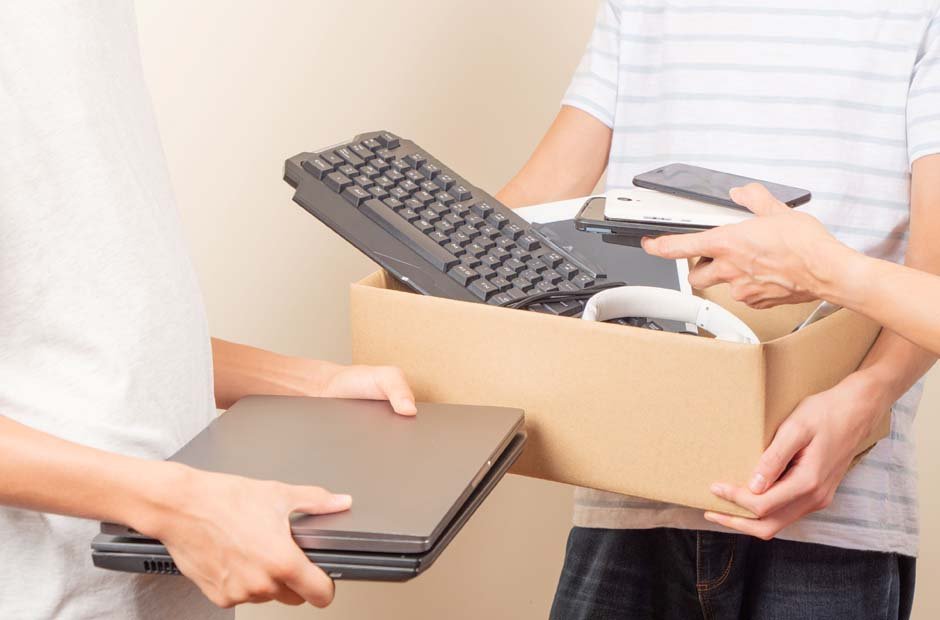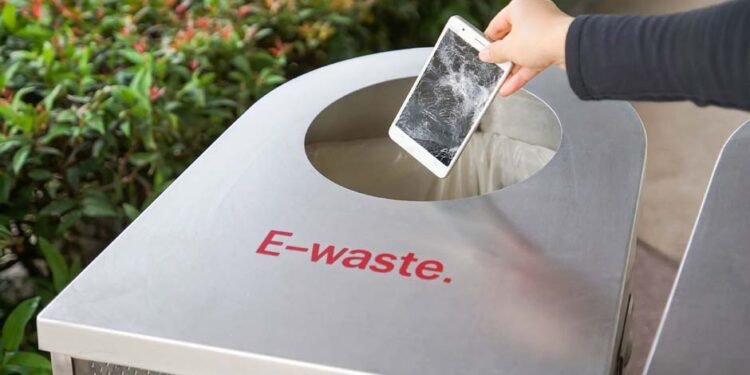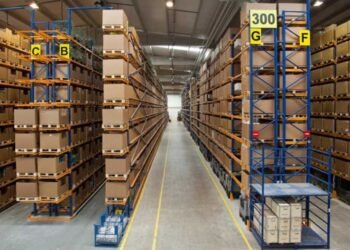Canada may not have its own Silicon Valley, but its tech industry is catching up. It’s poised to become one of the biggest hubs for artificial intelligence (AI) startups. However, advanced computer platforms need modern electronic devices, forcing consumers to replace outdated systems with newer models. This poses a significant threat to proper waste management.
Electronic items contain valuable and potentially toxic chemicals. These harmful substances can leach to the ground, harming our ecosystems. Thus, proper disposal and waste recycling practices must be observed.
But have you always wondered how a simple electronic waste drop-off could make a big difference? Let’s discuss what happens after handing over your unwanted devices to recyclers.
E-Waste Collection Process
A recent study has revealed that Canada’s electronic waste generation has more than tripled in the last 20 years—jumping from 8.3 kilograms to 25.3 kilograms per person in 2000 and 2020, respectively. By 2030, the country’s overall e-waste generation is expected to reach 1.2 million tonnes (1.2 billion kilograms). (1)
To minimize the environmental impact of digitalization, government and private organizations are working together to get rid of waste items responsibly.
Common Drop-Off Points
Each municipality has recycling centers where consumers can send their end-of-life (EOL) electronics of different types and sizes. Some private companies offer electronic waste drop off near their facilities or organize special e-waste collection activities at convenient locations. If you don’t have the time to visit these locations, you can have your devices picked up for your convenience. The company will deliver these to the nearest designated recycling facility for processing.
Non-profit groups like the Electronic Products Recycling Association (EPRA) and electronics manufacturers and retailers also have government-accredited programs for handling various EOL electronic equipment. Moreover, Canada’s Extended Producer Responsibility shifts some of the responsibilities of lifecycle management to electronics makers, including collecting and recycling non-functional items.
Electronic Items Accepted
Most e-waste recycling programs deal with a wide range of electronic products—from visual equipment, outdoor tools, cell phones, and appliances to computer parts and peripherals like monitors, keyboards, and hard disks. Meanwhile, household hazardous waste requires special handling, so don’t bring paint or flammable materials when disposing of your electronic waste.
Knowing which items can be processed in recycling centers is crucial before getting rid of your unwanted equipment. And before an electronic waste drop off, wipe off all data, including your personal information. You may also be asked to remove the battery and dispose of it in a separate facility.
Initial Sorting
Whether throwing away yard waste or electronic waste like video systems, your unwanted device goes through manual sorting. This is done to prepare the items for the next stage, which involves recovering valuable and reusable parts and separating them from harmful substances.
Pre-Recycling Processes for Different Components
Pre-processors or facilities that collect, sort, shred, sell, and refurbish recycled materials use manual and mechanical methods to separate and extract different electronic components.
Metals, for instance, batteries, can either be melted—as is the case for rechargeable types—or powdered and resold on the market. These can be used to make new batteries or as raw materials for different industries. Meanwhile, plastics are often shredded and repurposed, while glass from screens and monitors can be melted and reused. Now, how about hazardous materials? They undergo various chemical treatment processes to ensure they don’t harm the environment.

Refurbishment and Reuse
Electronic product recycling also involves refurbishing and reusing to further promote a circular economy.
Thrown items with minor defects or outdated systems are thoroughly checked and assessed. If the item can be repaired or upgraded by replacing certain components, recycling facilities hand these over to the manufacturers or third parties who’ll then sell these as refurbished devices.
A 2022 study of a Canadian e-waste pre-processing facility showed that refurbished goods captured a huge chunk of the facility’s revenues. Metal-containing parts, especially those with copper, came in second. Lesser earning components included CRT glass, wood, and plastics. (2)
Environmental Impact
Recycling, repurposing, and refurbishing electronics help significantly reduce landfill waste. Government data shows that while the amount of solid waste generated in Canada rose to 17% from 2002 to 2020, the amount of waste diverted also increased by 49%, or a total of 9.9 million tonnes. In 2020 alone, 27.5% of solid waste was diverted, while only 72.5% was disposed of. (3)
These eco-friendly practices effectively conserve natural resources while reducing greenhouse gases from various manufacturing processes. For instance, glass recycling reduces air pollution by 20% and water pollution by 50%, according to the World Wide Fund For Nature (WWF). The energy requirement for heating recycled glass is also significantly lower, making it less resource-intensive than making new ones. (4)
Challenges in Canadian E-Waste Management
Canadian regulations on e-waste handling and worker safety revolve around environmentally safe and fair labour practices. Recycling facilities are required to document their processes for periodic auditing. Despite this, provincial laws vary, leading to operational differences and varying levels of e-waste management efficiency. Like the rest of the world, the country is struggling to deal with non-recyclable components—which still end up in landfills.
Final Words
Canada is committed to keeping to a greener future. The country is serious about tackling electronic waste, and ensuring proper disposal and waste recycling practices. Even so, it’s important to note that consumers play a key role in proper e-waste disposal, too. So, stop keeping old devices in your home or office. Send them to the nearest processing facility for proper disposal. Our planet will thank you for it.
References:
1. ‘Canada’s electronic waste more than tripled in the last 20 years, UW study indicates’. Source: https://www.cbc.ca/news/canada/kitchener-waterloo/university-waterloo-electronic-waste-1.6835910
2. ‘Pre-processing of e-waste in Canada: Case of a facility responding to changing material composition’. Source: https://www.sciencedirect.com/science/article/pii/S2666916122000238
3. ‘Solid Waste Diversion and Disposal’. Source: https://www.canada.ca/en/environment-climate-change/services/environmental-indicators/solid-waste-diversion-disposal.html
4. Source: https://wwf.panda.org/discover/knowledge_hub/teacher_resources/project_ideas/recycling_glass/












